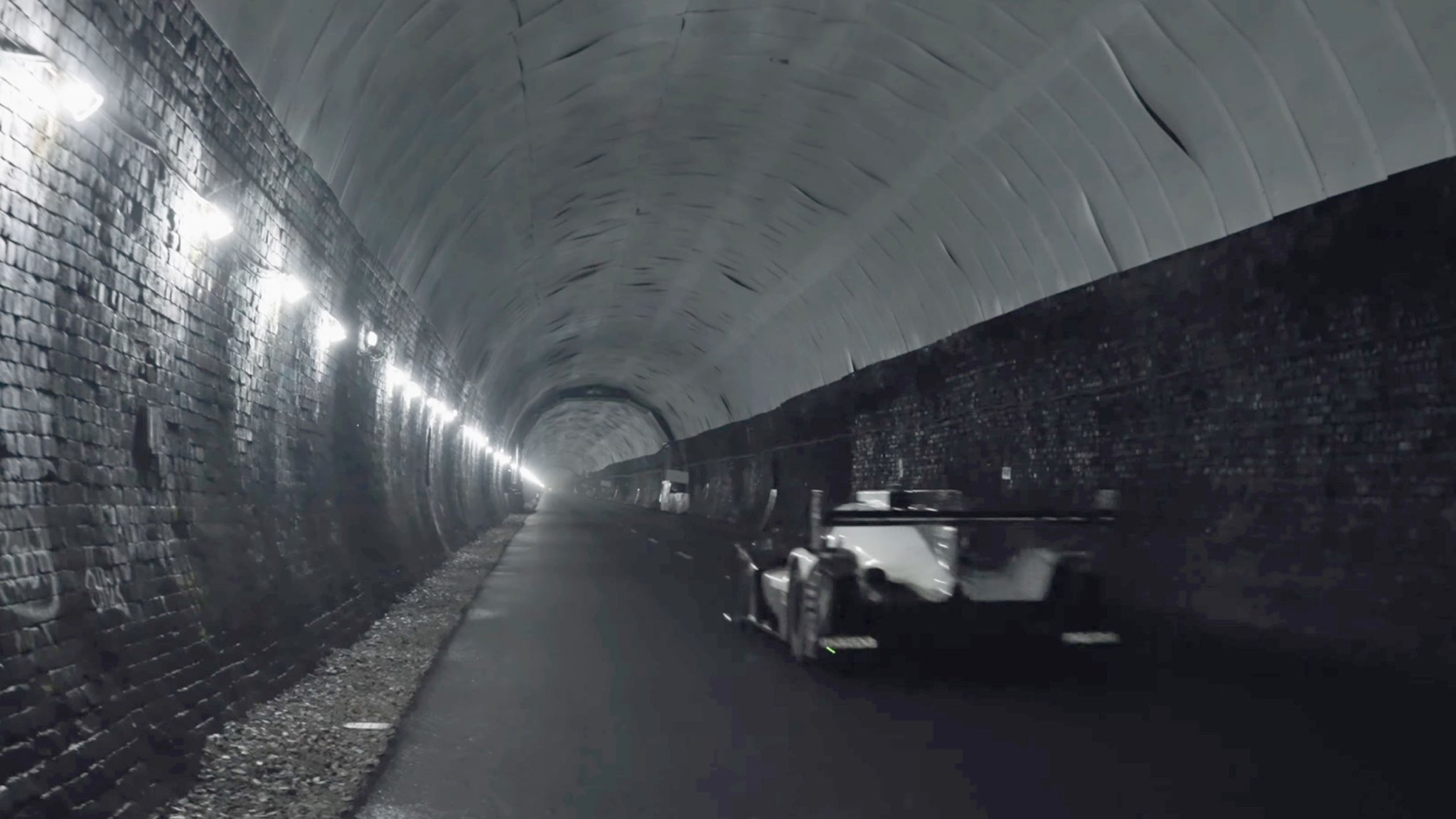

Wind tunnels are a mainstay in automotive engineering, but what if instead of simulating the car moving down the road, you could drive it down the road? That’s the purpose of the new Catesby Tunnel in the United Kingdom: it’s a testing tunnel so long that you don’t need wind.

Air moves over the car’s bodywork in Catesby Tunnel because you’re driving through it, just like you would out in the open, only without the added variables from the weather outside. Testing is all about control, and you want to be able to compare multiple runs made in conditions that are as similar as possible to each other to be able to tweak one item at a time while knowing that what you’re tweaking is the real difference as opposed to a change in the weather. That’s where a controlled environment like Catesby Tunnel comes in handy. It’s a completely isolated, temperature-controlled, and flat tunnel designed to test a car’s aerodynamics, and it looks pretty wild.
Catesby Tunnel opened in July 1898 as a dual-rail Victorian-era railway runnel and was constructed with approximately 30 million bricks. It closed to trains in 1966, but Aero Research Partners decided that this perfectly straight 1.68-mile-long tunnel had real potential as a place to discreetly test out vehicle aerodynamics. This is only the second long-tunnel aerodynamic test facility like it in the world, and the longest of its kind so far.
First, they needed to test out whether it would work, which involved sending a car down the tunnel. This is where Aero Research Partners enlisted the help of performance shop Multimatic Motorsports, which brought its ex-IMSA Mazda DPi out of retirement for a send down the tunnel. The Mazda DPi only recently quit racing after the 2021 season, but it had raced for five years by then, and Multimatic had a wealth of performance data to compare with this test.

Multimatic ran the Mazda down the tunnel at speeds up to 120 mph to test whether the results produced running through Catesby correlated to the results gained through Computational Fluid Dynamics tests as well as conventional 40%-scale and full-size wind tunnel testing. The data matched up pretty well, and Multimatic Motorsports is pleased with the results so far.
“Compared to conventional wind tunnels, this is better because it’s real. In a moving ground plane wind tunnel, the car is stationary and the wind is blown over it by a massive fan and flow conditioning set-up, and a belt is arranged to move under the car at a coordinated speed,” Multimatic founder Larry Holt said. “It’s a very sophisticated configuration but the car is still stationary and that constitutes the not totally real piece. What Catesby facilitates is the measurement of the aerodynamic performance of a vehicle actually moving through the real world.”
It seems obvious, but it works. The tunnel sits close to Multimatic’s U.K. office in Northamptonshire, and the company now plans to use it more when developing its road, track and race cars.
Got a tip? Email the author: stef@thedrive.com